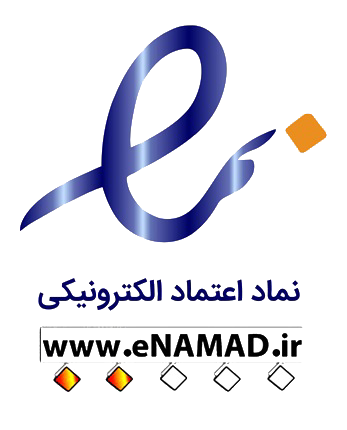در صورتی که اشکالی در ترجمه می بینید می توانید از طریق شماره زیر در واتساپ نظرات خود را برای ما بفرستید
09331464034
Topic:
To understand the most important characteristics of a society, one must study its major cities.
Write a response in which you discuss the extent to which you agree or disagree with the statement and explain your reasoning for the position you take. In developing and supporting your position, you should consider ways in which the statement might or might not hold true and explain how these considerations shape your position.
برای درک مهمترین ویژگیهای یک جامعه، باید شهرهای بزرگ آن را مطالعه کرد.
پاسخی بنویسید که در آن درمورد موافقت یا مخالفت با این جمله بحث کنید و استدلال خود را درباره موضع گیری خود توضیح دهید. در توسعه و حمایت از موضع خود، باید روشهایی را در نظر بگیرید که طبق آن، این نظریه ممکن است درست باشد یا نباشد و توضیح دهید که این ملاحظات چگونه موضع شما را شکل می دهند.
موافق
- شهرهای بزرگ به منزله ی پنجره هایی هستند که از روزنه ی آن ها می توان به مشخصه های مهم جامعه نگاه کرد.
- در مقایسه با شهرهای کوچک، کلان شهرها بالاترین جمعیت یک کشور را به خود اختصاص می دهند و این مهم ترین دلیلی است که برای شناخت جامعه باید این شهرها را مورد مطالعه قرار داد.
- جامعه اساساً از مردم تشکیل شده و مشخصه های جامعه متاثر از مردمش هست. بنابراین، مطالعه ی زندگی مردم، شغل و پارامترهای دیگر به شناخت یک جامعه کمک زیادی می کنند.
- در جوامع بزرگ به خصوص در کلان شهرها، مردمانی از نواحی مختلف کشور و با مشخصه های مختلف زندگی کنند و در عین حال در محیط اطراف و شخصی، سبک و سنت های ریشه ای خود را رعایت میکنند، زبان ناحیه ی محلی خود را به کار می برند، و یا به کسب و کار های موروثی خود مشغول می شوند.
- معمولا موزه ها، سینما ها و بناهای فاخر در شهر های بزرگ بنا نهاده شده اند و با بررسی آنها میتوان با خصوصیات هر جامعه بیشتر آشنا شد.
- مرکز اصلی دولت و نهاد های حکومتی در شهر های بزرگ وجود دارد و حکومت ها بیشترین توجه را به این شهر ها دارند.
- مراکز تحصیلی معتبر و دانشگاه ها، معمولا، در شهر های بزرگ واقع شده اند و میتوان نظر قشر تحصیلکرده در موارد مختلف را جویا شد.
- دفاتر اصلی مراکز اقتصادی، دفاتر کارخانجات، اصناف و بیمارستان های خصوصی، شغل ها مهم و ... در شهرهای بزرگ واقع اند و میتوان نظر قشر مرفه را بررسی کرد.
مخالف
- مخالفان این دیدگاه ممکن است مدعی باشند که شهرهای کوچک و روستاها نمادهای سنت یک جامعه هستند. بله بسیاری اوقات این جمله درست است، ممکن است بعضی از کلان شهرها سنت های ارزشمند خود را با توسعه خود از دست داده باشند، با این حال این بدین معنی نیست که آن ها خصوصیات اصلی جامعه را از دست داده باشند. خصوصیات یک جامعه نه تنها به سنت ها بلکه بیش تر از آن به روح و روان مردم آن بستگی دارد.
- به طور طبیعی حس رقابت طلبی، چشم و هم چشمی، فرهنگ مصرف گرایی و سرمایه داری در شهر های بزرگ بیشتر از دیگر نقاط کشور است.
- معمولا رستوران ها و فست فود ها سبک غذای سنتی جامعه را نشان نمی دهند.
- لباس مردم در شهر های بزرگ شبیه هم هستند در حالیکه در شهر ها و روستاها لباس های سنتی رایج است.
Strategies
Restate the issue, perhaps by reversing the order of the sentence components.
In other words:
Studying a society's major cities leads to understanding its most important characteristics.
Determine what question is being answered by the statement. This will help you begin to think how you would answer it and whether or not you agree with the original statement.
How can one understand the most important characteristics of a society?
Parts of the original statement that provide evidence that you can affirm or refute.
a) understand – This implies more than identifying or listing. Understanding occurs at a deeper level.
b) most important – The superlative –most– implies a selection process that eliminates less important characteristics. What process and how was it created?
c) society – this can refer to any social entity, large or small.
d) major cities – Major might refer to size of population, state capitals, centers of industry, number of educational institutions. How were cities identified as major?
e) study – This implies a deep examination. What aspects of these cities should one study to gain understanding of society's most important characteristics?
Next, create a statement that expresses the opposing viewpoint, using language similar to that of the original statement.
Opposing viewpoint:
Studying its major cities is not a means to understanding a society's most important characteristics.
Identify the parts of the opposing statement that provide evidence to refute or affirm. In this case, the evidence is the same as that in the original statement except for the word not.
a) not – In this case, it removes studying major cities as a means of understanding society's most important characteristics. Using this statement forces the writer to develop other means of understanding societal characteristics.
Alternatives:
Is there any other way to look at this issue? Can you qualify the original statement in some way? Is it possible to partially agree with the statement?
New viewpoint:
To understand the most important characteristics of a society, one must study its major cities as well as small towns and rural communities.
Identify the parts of the new statement that provide evidence to affirm or refute.
a) one component – This suggests that studying major cities does not illuminate all of a society's most important characteristics.
The following essay uses this balanced position. In other words, both major cities and smaller towns or rural areas have qualities that make them repositories of a society’s important characteristics. List some examples to use as support. Because the issue does not mention what the important characteristics of a society are, you will have the freedom to suggest what they might be.
Examples:
a) Diversity – Cities are the likely repositories of this characteristic. Small towns are more homogeneous.
b) Culture – Major cities provide greater access to cultural events and displays, e.g., theater, symphony, museums.
c) Education – Access to a wide range of educational institutions exists in major cities.
d) Self–reliance – Lack of a variety of products and services makes residents of small towns more self–reliant.
Sample 1:
To claim that one can understand a society’s most important characteristics by studying only its major cities ignores all of the other social structures that exist within a country. A country as vast as the United States, for example, is made up of fifty states that act as independent entities in many respects. Within each of those states reside groups of citizens united or divided by race, ethnicity, religion, or social class. Some states do not even have what may be considered a major city. To presume that only major cities are worthy of study minimizes the contribution of smaller constructs to the characteristics of the larger society. On the other hand, many large cities are composed of smaller societies that may represent those that exist in the remote and far–flung areas of this large country.
Before determining where examples of a country's most important characteristics reside, one would need to identify what those characteristics are. If diversity is near the top of the list, then major cities would be the places to study it. New York City is home to neighborhoods like Little Italy, Chinatown, Spanish Harlem, and Hell's Kitchen. Additionally, residents of NYC live in neighborhoods that cater to lifestyle or economic class, such as Greenwich Village, SoHo, and Park Avenue. Small towns in rural America tend towards homogeneity, and their residents have little exposure to racial or ethnic diversity.
An appreciation for fine arts might rank high in importance as a societal characteristic, and, once again, cities are home to myriad institutions where the fine arts are displayed or performed. Only in major cities is one likely to find museums of art, symphonies, opera houses, and theaters for the live performance of plays and musicals. Residents of small towns may only have a high school band and access works of art on the Internet, thus limiting their exposure to and appreciation of the fine arts.
Physical access to institutions of higher learning elevates the citizens of a society and is universally considered to be important. Graduates of small– town high schools must generally leave home to obtain a college degree, whereas students in a major city need travel only a few blocks to attend an Ivy League college, a state university, a design institute, or a school for the performing arts. Lack of access may even discourage children in remote areas from attending college, reducing the overall level of education in those towns and making them less desirable to study for identifying the important characteristics of society.
In contrast, small cities and rural towns may be better locations to study characteristics that are as important as the ones cited above. Residents of these communities are more likely to combine their efforts to support a member in need. One cannot miss the donation cans on convenience store counters that are used for collecting money to help a family that has lost everything to a fire or has a child undergoing expensive medical treatment. The local grocer has a community bulletin board where service clubs can post upcoming events to raise funds to send the high school baseball team to Florida for spring training or to build new dugouts at the town's playground. If concern for one's neighbors ranks high on the list of important characteristics, then small towns are suitable subjects of study.
Residents of rural towns retain some level of self–sufficiency, although the expansion of the Internet has had some impact on that quality. Vegetable gardens are common, and housewives still can and freeze their yields for future consumption. Husbands are jacks–of–all–trades. They mow their own lawns, paint their own houses, and use their own tools to repair broken machines or change a washer on a faucet. Kids on farms have chores as well as school work to complete each day. An important characteristic of any society might be hard work combined with ingenuity, and small towns are likely to be populated with people who display this.
On the whole, the original statement has veracity. Major cities are microcosms; their residents are representative of the society as a whole. Visitors to those cities can see people from all walks of life, from varied backgrounds and those who display talents and abilities that one may find isolated in smaller towns. Cities are growing while small towns are shrinking, so the important characteristics that were once unique to rural America are making their way into cities. However, when attempting to understand an entire society, one must examine all of its communities, including small towns and rural villages. Knowing the criteria used to create the original position would make affirming or refuting it a simpler task.
Sample 2:
As the good old clich goes, “when you are in Rome, do as the Romans do,” it is understood that Romans can be expected to behave in a manner that is represented by the city of Rome. In other words, the city of Rome reflects the characteristics of the Roman society. Is this true in the present world also? This clich may be questionable in the modern world because Rome would now constitute of people from various societies who have chosen to settle there due to various reasons like their choice of career. Therefore, it is now very difficult to understand the most important characteristics of any one society by studying its major cities. On the contrary, these characteristics could be better understood by studying the villages and small towns of the society where the traits and characteristics of that society would still be preserved.
In the past, the major cities of any civilization or society were the economic, cultural and political centers of that particular society. These cities reflected the true characteristics of the society that they were a part of. However, due to rapid developments across the globe, now most of the major cities of the world are almost the same. This is because there has been an intermingling of various societies with people traveling far and wide in search of careers and better homes. Any major city of the world would now consist of people who may have varied origins.
Can a study of Paris help in understanding the true characteristics of the French society? The answer to this question would probably be a “No”. This is because by virtue of being the fashion hub of the world, Paris now the home of designers, fashion models, garment manufacturers who have their roots in some other country. Therefore, a study of Paris cannot be relied upon for giving accurate information about the French society. Moreover, over the years, there would have been inter-race marriages leading to a new generation that does not carry the traits of the societies of either of its parents. In fact, the case is similar in most of the major cities across the world leading to a generation that is not related to any one society in particular. On the contrary, small towns and villages situated in the countryside of France will give you an idea of the characteristics of the French society as these townships would be consisting of French people who have been able to retain their traditions through the generations.
Extensive excavations in Pakistan had led to the discovery of the civilizations of Mohenjodaro and Harappa. These excavations revealed the remains of the towns that were a part of the Indus valley civilization. A study of these towns has shed light on the characteristics of the society that existed in those times. The people of the society were restricted to living in these cities due to lack of suitable means of transport for long distance traveling. They were probably born and brought up in the same city and this made them follow the norms of the society religiously. Therefore, a study of the major cities in the past would have given an exact indication of the characteristics of the societies that existed in those times. However, the same may not be true in the present context.
In sum, it is definitely true that a study of the major cities of any society helps in understanding the characteristics of the society. However, this may not necessarily be true in the modern world where the characteristics of a society are probably limited to its rural areas.
نظرات کاربران
هنوز نظری درج نشده است!


